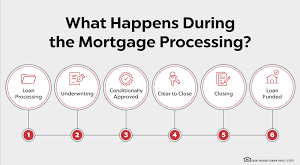Private Mortgage Insurance Removal Calculator: How to Calculate and Remove PMI Effectively. Private Mortgage Insurance (PMI) can be a significant cost for homeowners, often added to mortgage payments when the down payment is less than 20% of the home’s value. Fortunately, there are ways to remove PMI and save money. This article will guide you through using a private mortgage insurance removal calculator, including how it works, factors influencing PMI removal, and practical tips for effectively removing PMI.
Understanding Private Mortgage Insurance (PMI)
What is PMI?
Private Mortgage Insurance (PMI) is a type of insurance that protects lenders in case a borrower defaults on their mortgage. It is typically required for conventional loans when the down payment is less than 20% of the home’s purchase price. PMI increases the monthly mortgage payment but provides no benefit to the borrower.
Why Remove PMI?
Removing PMI can lead to significant savings. Once you have sufficient equity in your home, eliminating PMI reduces your monthly mortgage payment and overall loan cost. It’s beneficial to explore removal options and understand how to calculate when you might qualify for PMI removal.
How to Use a Private Mortgage Insurance Removal Calculator
What is a PMI Removal Calculator?
A PMI removal calculator is a tool designed to estimate when you will have enough equity in your home to qualify for PMI removal. By inputting specific information about your mortgage, such as the current balance, home value, and loan terms, the calculator provides an estimate of when you can request to remove PMI.
Steps to Use a PMI Removal Calculator:
- Gather Information: Collect your current mortgage balance, home value, loan term, and interest rate.
- Enter Data: Input these details into the calculator.
- Calculate: The calculator will provide an estimate of when you will have 20% equity in your home.
- Review Results: Use the estimate to plan when to apply for PMI removal.
Factors Influencing PMI Removal
Home Equity
Equity is the difference between your home’s current value and your mortgage balance. You need to reach at least 20% equity to qualify for PMI removal.
Home Value Appreciation
If your home’s value has increased since you purchased it, you may reach the 20% equity threshold sooner. An updated appraisal can help determine the current value of your home.
Loan Payments
Your mortgage payments and how they affect your balance over time are crucial. Regular payments reduce the balance, increasing equity.
Refinancing
Refinancing your mortgage can help you achieve a lower interest rate and remove PMI if your home value has increased and you have enough equity.
Property Improvements
Significant upgrades or renovations can increase your home’s value, helping you reach the necessary equity for PMI removal.
Calculating PMI Removal: Detailed Example
Example Calculation
- Current Home Value: $300,000
- Current Mortgage Balance: $250,000
- Loan Term: 30 years
- Interest Rate: 4.0%
Using these figures, you would use a PMI removal calculator to estimate when your equity reaches 20%.
Results Interpretation
The calculator might show that with your current balance and home value, you’ll reach 20% equity in approximately 5 years. This timeline will help you plan when to apply for PMI removal.
Tips for Effective PMI Removal
- Monitor Home Value: Regularly check your home’s value to track when you might reach 20% equity.
- Make Extra Payments: Additional payments toward your principal can accelerate PMI removal.
- Request a Home Appraisal: An updated appraisal can confirm your home’s current value and expedite PMI removal.
- Keep Records: Maintain documentation of your mortgage payments and home value updates.
- Check Loan Terms: Review your loan’s PMI removal terms and conditions.
- Refinance if Necessary: Consider refinancing if it results in PMI removal and better loan terms.
- Communicate with Your Lender: Stay in touch with your lender about your PMI removal progress and requirements.
- Understand PMI Cancellation Rules: Familiarize yourself with the rules for automatic and borrower-requested PMI cancellation.
- Track Equity Growth: Use tools and calculators to monitor your equity growth.
- Plan Financially: Budget for any costs associated with removing PMI, such as appraisal fees.
FAQs About PMI Removal
- What is PMI?
- PMI is insurance for lenders when a borrower’s down payment is less than 20% of the home’s value.
- How do I know if I qualify for PMI removal?
- You generally need to reach 20% equity in your home. Use a PMI removal calculator to estimate when you might qualify.
- Can I remove PMI before reaching 20% equity?
- Sometimes refinancing or requesting a new appraisal can help remove PMI sooner.
- What information do I need for a PMI removal calculator?
- You need your current mortgage balance, home value, loan term, and interest rate.
- How often can I request PMI removal?
- You can request PMI removal once you’ve reached 20% equity or meet other lender requirements.
- Does PMI removal require a new appraisal?
- It may, especially if your home’s value has increased significantly.
- What are the benefits of removing PMI?
- Removing PMI reduces your monthly mortgage payment and overall loan cost.
- How can I increase my home’s equity quickly?
- Make extra principal payments, improve the property, or refinance if appropriate.
- Are there costs associated with PMI removal?
- There may be costs for appraisals or refinancing. Check with your lender for specifics.
- How long does it take to remove PMI?
- The timeline varies based on reaching equity thresholds and lender processing times.
Conclusion
Removing Private Mortgage Insurance (PMI) can lead to substantial savings on your mortgage payments. By using a PMI removal calculator, understanding the factors influencing PMI removal, and following practical tips, you can effectively manage and potentially eliminate PMI from your mortgage payments. Regularly monitoring your home’s value and maintaining open communication with your lender will help you achieve your goal of removing PMI and enhancing your financial well-being.
 mortgage.kbk.news
mortgage.kbk.news
